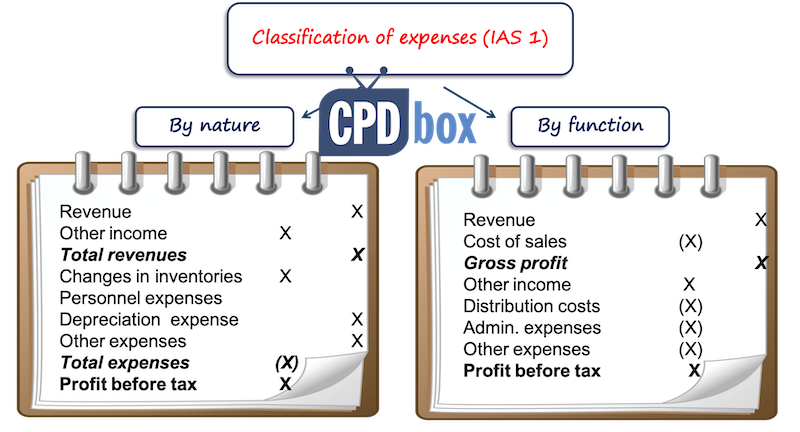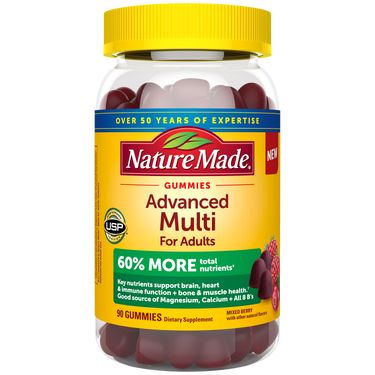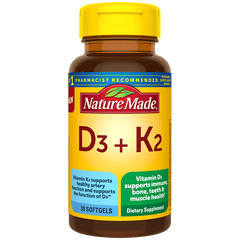Income Statement (By Nature Vs By Function)
Is an income statement presented by nature of expense or by function of expense?

Income Statement by Nature of Expense
Expenses in an income statement are either classified by their nature or by their function.
An income statement by nature is the one in which expenses are disclosed according to categories they are spent on, such as raw materials, transport costs, staffing costs, depreciation, employee benefit etc. The expenses will not be further classified into their functions (i.e cost of goods sold, selling, administrative, etc).
This method of disclosure of expenses is used in single step income statement, usually employed by small businesses as it is simple and relatively easier to be implemented. However, the drawback of this method is that it cannot be used to calculate gross profit within the income statement.
The following example shows the format of an income statement by nature.
| Sales | 573,610 | |
| Expenses: | ||
| Purchases, delivery charges and other direct costs | (158,401) | |
| Changes in inventory | 69,426 | |
| Depreciation Expense | (3,250) | |
| Rent Expense | (24,000) | |
| Employee benefit expenses | (124,630) | |
| Utilities Expense | (6,900) | |
| Interest Expense | (375) | |
| Total Expenses | (248,130) | |
| Net Income | 325,480 |
Income Statement by Function of Expense
An income statement by function is the one in which expenses are disclosed according to different functions they are spent on (cost of goods sold, selling, administrative, etc.)
This method allows us to calculate gross profit and operating profit within the income statement, and therefore is usually used in the multi-step format of income statement. Most large and medium sized businesses use this method.
The following shows the format of an income statement by function of expense.
| Revenue | 102,716 | |
| Cost of sales | (55,708) | |
| Gross profit | 47,008 | |
| Other income | 1,021 | |
| Selling and distribution expenses | (17,984) | |
| Administrative expenses | (17142) | |
| Research and development expenses | (1,109) | |
| Other expenses | (860) | |
| Results from operating activities | 10,934 | |
| Finance income | 1,161 | |
| Finance costs | (1,707) | |
| Net finance costs | (546) | |
| Share of profit of equity-accounted investees, net of tax | 541 | |
| Profit before tax | 10,929 | |
| Tax expense | (3,371) | |
| Profit from continuing operations | 7,558 |
Have a question?
Give us your email and we'll be in touch..

- Global (EN)
- Albania (en)
- Algeria (fr)
- Argentina (es)
- Armenia (en)
- Australia (en)
- Austria (de)
- Austria (en)
- Azerbaijan (en)
- Bahamas (en)
- Bahrain (en)
- Bangladesh (en)
- Barbados (en)
- Belgium (en)
- Belgium (nl)
- Bermuda (en)
- Bosnia and Herzegovina (en)
- Brasil (pt)
- Brazil (en)
- British Virgin Islands (en)
- Bulgaria (en)
- Cambodia (en)
- Cameroon (fr)
- Canada (en)
- Canada (fr)
- Cayman Islands (en)
- Channel Islands (en)
- Colombia (es)
- Costa Rica (es)
- Croatia (en)
- Cyprus (en)
- Czech Republic (cs)
- Czech Republic (en)
- DR Congo (fr)
- Denmark (da)
- Denmark (en)
- Ecuador (es)
- Estonia (en)
- Estonia (et)
- Finland (fi)
- France (fr)
- Georgia (en)
- Germany (de)
- Germany (en)
- Gibraltar (en)
- Greece (el)
- Greece (en)
- Hong Kong SAR (en)
- Hungary (en)
- Hungary (hu)
- Iceland (is)
- Indonesia (en)
- Ireland (en)
- Isle of Man (en)
- Israel (en)
- Ivory Coast (fr)
- Jamaica (en)
- Jordan (en)
- Kazakhstan (en)
- Kazakhstan (kk)
- Kazakhstan (ru)
- Kuwait (en)
- Latvia (en)
- Latvia (lv)
- Lebanon (en)
- Lithuania (en)
- Lithuania (lt)
- Luxembourg (en)
- Macau SAR (en)
- Malaysia (en)
- Mauritius (en)
- Mexico (es)
- Moldova (en)
- Monaco (en)
- Monaco (fr)
- Mongolia (en)
- Montenegro (en)
- Mozambique (en)
- Myanmar (en)
- Namibia (en)
- Netherlands (en)
- Netherlands (nl)
- New Zealand (en)
- Nigeria (en)
- North Macedonia (en)
- Norway (nb)
- Pakistan (en)
- Panama (es)
- Philippines (en)
- Poland (en)
- Poland (pl)
- Portugal (en)
- Portugal (pt)
- Romania (en)
- Romania (ro)
- Saudi Arabia (en)
- Serbia (en)
- Singapore (en)
- Slovakia (en)
- Slovakia (sk)
- Slovenia (en)
- South Africa (en)
- Sri Lanka (en)
- Sweden (sv)
- Switzerland (de)
- Switzerland (en)
- Switzerland (fr)
- Taiwan (en)
- Taiwan (zh)
- Thailand (en)
- Trinidad and Tobago (en)
- Tunisia (en)
- Tunisia (fr)
- Turkey (en)
- Turkey (tr)
- Ukraine (en)
- Ukraine (ru)
- Ukraine (uk)
- United Arab Emirates (en)
- United Kingdom (en)
- United States (en)
- Uruguay (es)
- Uzbekistan (en)
- Uzbekistan (ru)
- Venezuela (es)
- Vietnam (en)
- Vietnam (vi)
- Zambia (en)
- Zimbabwe (en)
- Financial Reporting View
- Women's Leadership
- Corporate Finance
- Board Leadership
- Executive Education
Fresh thinking and actionable insights that address critical issues your organization faces.
- Insights by Industry
- Insights by Topic
KPMG's multi-disciplinary approach and deep, practical industry knowledge help clients meet challenges and respond to opportunities.
- Advisory Services
- Audit Services
- Tax Services
Services to meet your business goals
Technology Alliances
KPMG has market-leading alliances with many of the world's leading software and services vendors.
Helping clients meet their business challenges begins with an in-depth understanding of the industries in which they work. That’s why KPMG LLP established its industry-driven structure. In fact, KPMG LLP was the first of the Big Four firms to organize itself along the same industry lines as clients.
- Our Industries
How We Work
We bring together passionate problem-solvers, innovative technologies, and full-service capabilities to create opportunity with every insight.
- What sets us apart
Careers & Culture
What is culture? Culture is how we do things around here. It is the combination of a predominant mindset, actions (both big and small) that we all commit to every day, and the underlying processes, programs and systems supporting how work gets done.
Relevant Results
Sorry, there are no results matching your search., income statement presentation: ifrs compared to us gaap.
The IFRS income statement follows certain formatting requirements and options different from US GAAP.

From the IFRS Institute - Nov 15, 2018
The IFRS presentation guidelines for annual financial statements are generally less prescriptive than SEC regulation, but may still surprise US private companies. IFRS preparers have some flexibility in selecting their income statement format and which line items, headings and subtotals are to be presented on the face of the statement. In this article we highlight key considerations affecting preparers when choosing the structure, format and contents of the income statement and other presentation matters.
Single statement vs. two statements
Under IAS 1[1], the income statement is the primary financial statement used to provide an understanding of a company’s performance and operations over a defined period of time. Because of its importance, its format is often debated and scrutinized by preparers, users, regulators, standard setters and others.
Under IFRS, the income statement is labeled ‘statement of profit or loss’. Like US GAAP, the income statement captures most, but not all, revenues, income and expenses. Other items of comprehensive income (OCI) do not flow through profit and loss. Examples include the fair value remeasurement of certain equity instruments, remeasurements of defined benefit plans, and the effective portion of cash flow hedges change in fair value.
Items of profit and loss and OCI can be presented as:
- a single statement: the ‘statement of comprehensive income’; or
- two separate statements: an income statement displaying profit or loss followed immediately by a separate statement of comprehensive income.
The selected structure is applied consistently.
Format and content of the income statement
Although the format of the income statement is not prescribed, certain items require presentation, if material, either on the face of the income statement or disclosed in the notes to the financial statements. Here we highlight certain items common for commercial or industrial companies and how they should be presented in the income statement.
Common items 'requiring' presentation on the face of the income statement
- Revenue, presenting separately interest revenue
- Finance costs
- Impairment losses related to financial instruments
- Share of the profit or loss of associates and joint ventures
- Tax expense
Common items that may be presented on the face of the income statement 'or' disclosed in the notes to the financial statements
- Writedowns of inventories to net realizable value or property, plant and equipment to recoverable value, as well as reversals of such writedowns
- Restructurings of the activities of an entity and reversals of any provisions for the costs of restructuring
- Gains or losses on disposals of items of property, plant and equipment
- Gains or losses on disposals of investments
- Litigation settlements
Unlike IFRS, SEC regulation prescribes the format and minimum line items to be presented for SEC registrants. For non-SEC registrants, there is limited guidance on the presentation of the income statement or statement of comprehensive income, like IFRS. |
Presentation of expenses by function or nature
Another accounting policy election is the presentation of expenses by either their function or nature. This determination should be based on which approach is most relevant and reliable and often depends on the company, the industry in which it operates and its users’ needs.
When expenses are presented by function they are allocated to, for example, cost of sales, selling or administrative activities. At a minimum, under this method companies present cost of sales separately from other expenses. This election requires the use of IT systems, defined processes and internal controls to make sure the allocations are appropriate. In our experience, most US companies present their expenses by function.
The presentation of expenses by nature is less complex. For example, expenses may be disaggregated as purchases of materials, transport costs, depreciation and amortization, personnel costs and advertising costs. A mixed presentation is not permitted. This means, for instance, that it’s not possible to present impairment losses on nonfinancial assets or amortization and depreciation in separate line items in a presentation by function.
Regardless of the approach used, companies need to ensure the presentation is not misleading and is relevant to the understanding of the financial statements. Lastly, if presenting expenses by function, companies are required to include additional information on the nature of expenses (e.g. depreciation, amortization and staff costs) in the notes to the financial statements.
Unlike IFRS, US GAAP has no requirement for expenses to be classified according to their nature or function. SEC regulations prescribe expense classification requirements, unlike IFRS. |
Presenting additional line items, headings and subtotals
IAS 1 allows companies to use additional line items, headings and subtotals in the income statement “if such presentation is relevant to an understanding of the company’s financial performance.” The standard allows for judgment when determining what to present and how to present it, rather than prescribing a format or specifying all the possible items.
Given that IFRS does not define gross profit, operating results or many other common subtotals, there’s flexibility when adding and defining new line items in the income statement. Many companies disclose ‘operating profit‘ or ’results from operating activities‘ as a subtotal before profit or loss in the income statement. As a general rule, all additional line items and subtotals should be clearly labeled and presented, made up of items recognized and measured using IFRS, and calculated consistently across periods. Further, items shouldn’t be displayed with more prominence than other items required in the income statement.
Unusual or exceptional items
IFRS does not describe events or items of income or expense as ‘unusual’ or ‘exceptional’. However, the presentation, disclosure or characterization of an item as extraordinary is prohibited.
We believe it is possible to characterize items as unusual or exceptional under certain conditions. This should be infrequent and reserved for items that justify a prominence greater than that achieved by separate presentation and disclosure – e.g. a natural disaster. Those items should also be classified by nature or function, in the same way as usual or non-exceptional amounts. Lastly, companies should provide an explanation of the nature of the amount and why the item has been classified in this manner.
Given the significant judgment involved, companies should exercise caution when presenting items as unusual or exceptional. For example, although often infrequent and significant, the costs associated with a restructuring event generally wouldn’t qualify.
Unlike IFRS, transactions of an unusual nature are defined as possessing a high degree of abnormality and of a type clearly unrelated to, or only incidentally related to, the ordinary and typical activities of the entity. Unlike IFRS, significant events or transactions that are unusual and/or occur infrequently are presented separately in the income statement or disclosed in the notes. Like IFRS, extraordinary items classification is prohibited. |
Items of income and expense are only offset when it is required or permitted by IFRS, or when gains, losses and related expenses arise from the same transaction or event or from similar individually immaterial transactions and events. For example, finance costs and finance expenses are generally presented gross; so are other income and expenses.
Like IFRS, items of income and expense are not offset unless it is required or permitted by another Codification topic/subtopic, or when the amounts relate to similar transactions or events that are not significant. However, offsetting is permitted in more circumstances under US GAAP than under IFRS. For example, derivatives executed with the same counterparty under a master netting arrangement may be offset, unlike IFRS. |
Non-GAAP financial measures
Non-GAAP financial measures (NGFMs) – also sometimes referred to outside the United States as alternative performance measures – are not defined in IFRS. In practice, investors are increasingly looking to, and companies are increasingly presenting, NGFMs. These are generally achieved by adding subtotals, such as EBIT or EBITDA, to the income statement. Such measures can be helpful in linking a company’s financial statements to explanations of its business performance.
When NGFMs are presented, companies are expected to:
- identify and define the NGFMs presented and the components included in such measure;
- provide the basis of calculation and how such measures reconcile to the IFRS financial statements; and
- be consistently presented over time.
Read our May 2017 article, Non-GAAP financial measures are thriving .
Unlike IFRS, the presentation of NGFMs in the financial statements by SEC registrants is generally prohibited. There are exceptions to this rule for Foreign Private Issuers applying IFRS. In practice, NGFMs are also not presented in the financial statements by non-SEC registrants, unlike IFRS. Read our . |
Income statement presentation – the takeaway
Most income statement items are consistently presented with little or no ambiguity as to their terminology or order. However, there is flexibility in terms of adding line items, using non-GAAP financial measures and formatting options. Therefore, companies need to be thoughtful when exercising their presentation choices, develop detailed accounting policies and ensure consistent application of such policies with full and transparent disclosures. Companies with the intention of going public should be prepared to respond to future challenges based on these considerations.
The IASB is conducting a standard-setting project on the primary financial statements to provide clarity on subtotals in the income statement, non-GAAP financial measures and unusual or infrequent items. This project is intended to provide guidance so that companies’ alternative performance measures will be more transparent and comparable. The FASB is also conducting a standard-setting project on the presentation of financial statements.
We believe the presentation of items in the income statement will continue to be a heightened area of focus and subject to future change.
- IAS 1, Presentation of Financial Statements
- Regulation S-X Rule 5-03, Income Statements, which applies to commercial or industrial companies
KPMG Executive Education
CPE seminars and customized training
Explore more
Meet our team.

Subscribe to the IFRS® Perspectives Newsletter
Subscribe to receive timely updates on the application of IFRS® Accounting and Sustainability Standards in the United States: our latest thought leadership, articles, webcasts and CPE seminars.
IFRS Perspectives Newsletter
By submitting, you agree that KPMG LLP may process any personal information you provide pursuant to KPMG LLP's Privacy Statement .
Thank you for contacting KPMG. We will respond to you as soon as possible.
Contact KPMG
Job seekers
Visit our careers section or search our jobs database.
Use the RFP submission form to detail the services KPMG can help assist you with.
Office locations
International hotline
You can confidentially report concerns to the KPMG International hotline
Press contacts
Do you need to speak with our Press Office? Here's how to get in touch.
Vernimmen.com
The reference for professionals and students of finance.
Read // Articles on financials // What is the difference between presenting costs by their nature and by their function on the P&L?
What is the difference between presenting costs by their nature and by their function on the P&L?
There are two main types of profit & loss statement:
- Either they present costs by their nature , e.g. production of goods less purchases of goods or raw materials, changes in inventories, staff costs, taxes and depreciation;
- Or by their function , that is, based on their use in the operating and investment cycle, e.g. turnover less cost of goods sold, sales and marketing expenditure, R&D costs and overheads).
But regardless of how the P&L is presented, the operating profit is still the same!
Presentation of costs by their function This is based on an analytical approach to the company, which classifies costs by major functions within the company
Personnel costs, for example, are broken down in each of these four functions (or three when sales & marketing costs and administrative costs are merged into one item), depending on whether the employee works in production, sales, R&D or administration. Similarly, the depreciation of a tangible fixed asset will be put under production costs if it is a machine, under sales & marketing costs if it is a salesperson's car, under R&D costs if it is laboratory equipment and under administrative costs if it is the accounting department's computers.
Presentation of costs by their nature This is the traditional presentation in France and many continental European countries. Obviously, in this approach, operating income, as in the previous case, is the difference between sales and the cost of these sales. European practice calls for booking costs when they are contracted, not when they are consumed. If the P&L shows, on the one hand, all purchases made during the year and, on the other hand, all invoices sent to clients, then we're comparing apples and oranges. After all, a company can stock some of the purchases it made during the year. This is not value destruction, but, rather, the constitution of an asset that is no doubt temporary, but quite real at a given moment. Meanwhile, it is possible that some of the company's finished products will not be sold during the year and, yet, the costs pertaining to these products appear on the P&L. So to avoid comparing apples and oranges, we have to make some adjustments, i.e.
- Remove the change in raw materials and goods, from purchases. We then book consumptions and not purchases;
- Add the change in inventories of finished goods to sales. We then book production and not sales.
Booking costs by their function starts with revenues and then reconstitutes the costs of these goods or services sold, in order to reach the operating profit. Booking costs by their nature starts from operating purchases and then adjusts them for changes in inventories of raw materials and finished products, in order to reach the operating profit, through subtraction from revenues (1).
A new presentation? A third way of presenting the P&L has emerged, in particular in France and the US. It looks like a presentation by function, except that it does not split up depreciation between various cost items but isolates it on one separate line, as in presentation by nature. Time will tell what becomes of this innovation.
INCOME STATEMENT PRESENT BY FUNCTION
Income statement (statement of profit or loss), gross profit.
Gross Profit = Revenues – Cost of Sales
Net Profit = Revenues – All Expenses (Cost of Sales + Other expenses)
Net Profit = Gross Profit – Other Expenses (Expenses that are not Cost of Sales)
Presenting Expenses in the Income Statement
Presentation by function.
| Raw material consumed | 1,200,000 |
| Production staff salaries | 80,000 |
| Machinery repair and maintenance | 10,000 |
| Administrative staff salaries | 50,000 |
| Legal charges | 10,000 |
| Insurance | 20,000 |
| Marketing staff salaries | 50,000 |
| Advertisements | 15,000 |
| 120,000 | 80,000 | 50,000 | 250,000 |
| 60,000 | 12,000 | 8,000 | 80,000 |
| $ | |
| Revenues | 2,000,000 |
| Less: Cost of Sales | (1,470,000) |
| Administrative Expenses | (172,000) |
| Marketing Expenses | (123,000) |
| Tax | (35,000) |
Related Posts
3 main purposes of financial statements (explained), what is asset definition, explanation, types, classification, formula, and measurement, 5 main elements of financial statements: assets, liabilities, equity, revenues, expenses, income statement: definition, types, templates, examples, and more.
- Skip to primary navigation
- Skip to content

Great things in business are never done one. They're done by a team of people.
Email us directly
[email protected]
Call us directly
(123) 567 8901, social network, send a message..
We’re here to answer any question you may have.
Would you like to join our growing team?
Have a project in mind? Send a message.
I am bound by the terms of the Service I accept Privacy Policy
- Blessing Peter Titus
- Bongdap Nansel Nanzip
- Joy Sunday Zaleng
- Obotu Agape Oguche
- Privacy Policy
- Terms and Conditions
IFRS vs GAAP Income Statement: Differences and Similarities
What is the difference between the IFRS vs GAAP income statements? The IFRS and US GAAP are the two common accounting standards that businesses adhere to. These accounting standards are needed to ensure that a company’s financial statements and information are accurate and can be compared to other companies’ financial statements.
However, there are some differences and similarities between the US GAAP and IFRS requirements on how companies should present their financial statements. Hence, the requirements under IFRS vs GAAP for income statement presentation would differ in several ways.
In this article, we will be comparing the differences between IFRS vs GAAP requirements for income statements as well as the similarities between these two accounting standards. But first, let us discuss what the income statement is.
See also: Is Net Income on Balance Sheet or Income Statement?
Income statement explained
An income statement is a financial statement that reports the income and expenditure of a company over a period of time. This financial statement is also known as a profit and loss statement (P&L) , or a statement of revenue and expense . The US GAAP and IFRS require the components of a complete set of financial statements which include a balance sheet (or statement of financial position ), an income statement, a statement of comprehensive income as well as a statement of cash flows and accompanying notes to the financial statements.

The income statement is one of the three important financial statements used for reporting the financial performance of a company over a specific accounting period. It can show the revenue, expenses, gains, and any loss incurred during the accounting period; it doesn’t include accounts such as assets, liabilities, and equity (these are found on the balance sheet) or unrealized gains from investments and loans (such would be reported in the cash flow statement ).
The income statement usually covers a period of time, such as one fiscal quarter or year, and can be used to assess the financial health of a company as well as determine the profitability of the business . Hence, it gives investors the necessary information to make a decision on a company. The statement can show whether a business is generating a profit or not and if a business spends more than it earns.
Read also: Statement of Retained Earnings GAAP vs IFRS: Differences and Similarities
Differences between IFRS vs GAAP Income Statement
- Under the IFRS, there is no special format for the income statement that needs to be followed whereas GAAP dictates a specific format in which an income statement should be prepared, i.e. either using a single-step or multiple-step format.
- Discounting of revenue to PV (present value) is required under IFRS whereas, under GAAP, it is only required in limited situations
- Under the GAAP guidance, vendor-specific objective evidence (VSOE) of fair value should be used to find out the estimated selling price of software whereas, under IFRS guidelines, no such rules are present.
- The presentation of NGFMs (non-GAAP financial measures) in financial statements is generally prohibited under GAAP whereas these measures can be used in income statements under IFRS.
- Under IFRS, the development cost is purely treated as an expense in the income statement whereas, under GAAP, it is treated as an expense, but is still capitalized if certain conditions are satisfied.
The US GAAP is an acronym for Generally Accepted Accounting Principles ; this set of accounting principles is set by the Financial Accounting Standards Board (FASB) which is followed by most United States companies. The IFRS, on the other hand, stands for International Financial Reporting Standards . IFRS is dictated by the International Accounting Standards Board (IASB) and followed by many countries outside the US. Nevertheless, deciding which set of standards to use when making financial reports like the income statement would depend on whether the company operates in the US or internationally.
Here are some of the differences between the IFRS vs GAAP requirements for income statement presentation:
Difference between US GAAP vs IFRS Income Statement in terms of format and content
The format and content of the income statement are factors when comparing IFRS vs GAAP income statement presentation. IFRS doesn’t prescribe the format of the income statement whereas GAAP prescribes the format and minimum line items to be presented for SEC registrants. GAAP dictates a specific format in which an income statement should be prepared, i.e. either using a single-step or multiple-step format. Under a single-step format, the classification of all expenses on the income statement is done by functions, and then those functions are deducted from the total income in order to derive income before tax.
The GAAP multi-step format, on the other hand, comprises a gross profit section where the cost of sales is deducted from sales, followed by the presentation of other income and expenses to reach an income before tax. However, this prescribed format is applicable to SEC registrants. For non-SEC registrants under GAAP, there is limited guidance on the presentation of the income statement, just as with IFRS.
Furthermore, even though the format for an income statement is not prescribed under IFRS, certain items require a presentation, if material, either on the face of the income statement or disclosed in the notes to the financial statements. Hence, under IFRS, there are certain items that are common for commercial or industrial companies to present in the income statement. The common items that require presentation on the face of the income statement under IFRS include:
- Revenue; presenting interest revenue separately
- Finance costs
- Impairment losses related to financial instruments
- Loss or profit of associates and joint ventures
- Discontinued operations
Common items that may be presented on the face of the income statement ‘or’ disclosed in the notes to the financial statements under IFRS include:
- Writedowns of inventories to net realizable value
- Writedowns of property, plant, and equipment to the recoverable value
- Reversals of such write-downs
- Restructuring of the activities of a company and reversals of any provisions for the costs of restructuring
- Losses or gains on the sale or disposal of fixed assets (property, plant, and equipment)
- Gains or losses on disposals of investments
- Litigation settlements
GAAP and IFRS also differs in terms of discounting of revenue
Discounting of revenue is another factor in the differences between IFRS vs GAAP income statements. Under GAAP, discounting of revenue is required in limited situations such as in the case of receivables that has more than one-year payment terms, or in situations such as license agreements for TV programs or retail land sales. However, under IFRS discounting of revenue to PV (present value) is required where the inflow of cash or cash equivalent is deferred. This may result in lower revenue because the time value part of the actual receivable is recognized as interest or finance income.
Difference in terms of software revenue recognition
There is also a difference between IFRS and GAAP when it comes to software revenue recognition. Under the GAAP guidance, vendor-specific objective evidence (VSOE) of fair value should be used to find out the estimated selling price of software whereas, under IFRS guidelines, no such rules are present.
Presentation of expenses by function or nature
The presentation of expenses by function or nature is another factor difference between IFRS vs GAAP income statements. The US GAAP has no requirement for expenses to be classified according to their function or nature, rather expense classification requirements are prescribed by SEC regulations. This is different for IFRS; under this standard, the presentation of expenses is done either by function or nature. This determination, however, should be based on which approach is most relevant and reliable and usually depends on the company; that is the industry in which the company operates and its users’ needs.
Expenses under IFRS can be presented on the income statement by function, for example, cost of sales, selling, or administrative activities . Under this method, companies present the cost of sales separately from other expenses. The presentation of expenses by nature, on the other hand, is less complex. For instance, expenses may be disaggregated as personnel costs , purchases of materials, transport costs, depreciation and amortization, and advertising costs .
Under IFRS, a mixed presentation of expenses on the income statement is not permitted. This means that it’s not possible for instance, to present amortization and depreciation in separate line items in a presentation by function. However, regardless of the approach used, companies need to make sure the presentation is not misleading and is relevant to the understanding of the financial statements. Conclusively, companies when presenting expenses by function are expected to include additional information on the nature of expenses in the notes to the financial statements.
US GAAP vs IFRS in terms of Expense Recognition- Gains and Losses
The recognition of gains and losses is also a factor when comparing IFRS vs GAAP income statement presentations. The GAAP guidelines allow companies to either record expenses related to gains and losses in a period incurred within the statement of operations (income statement) or defer those gains or losses using the corridor approach. As for IFRS, the re-measurement of gains and losses is immediately recognized in OCI (other comprehensive income) because there is no way they can be recognized in profit or loss since the corridor and spreading approach is prohibited under IFRS.
Prior-service cost in employee benefit plan
In GAAP, the prior service cost is recognized at the date when the amendment of the plan is adopted under other comprehensive income (OCI), and it is then amortized as income over the remaining years of services of participants to complete the eligibility date or life expectancy.
However, in IFRS, all prior service cost, whether it is positive or negative, is recognized in the profit and loss (P&L) account when the amendment takes place in the employee benefit plan, and it is prohibited to be spread over a future service period, as it may give rise to volatility in P&L.
Presenting additional line items, headings, and subtotals
Presenting additional line items, headings, and subtotals in the income statement differs under IFRS vs GAAP. The IAS 1 allows companies to use additional line items, headings, and subtotals in the income statement whereas GAAP does not present a requirement for that. IFRS permits the use of additional line items, headings, and subtotals if the presentation is relevant to an understanding of the company’s financial performance.
The IFRS allows for judgment when determining what to present and how to present it, rather than prescribing a format or specifying all the possible items. Even though the IFRS does not define gross profit, operating results, or many other common subtotals, there’s flexibility under this standard when adding and defining new line items in the income statement.
Hence, many companies disclose operating profit or results from operating activities as a subtotal before profit or loss in the income statement. As a general rule, all additional line items and subtotals must be clearly labeled, presented, and made up of items recognized and measured using IFRS; and also calculated consistently across periods. Furthermore, items shouldn’t be displayed with more prominence than the other items required in the income statement.
Development cost
Under IFRS, the development cost is purely treated as an expense in the income statement. Conversely, under GAAP, the development cost is treated as an expense but is still capitalized if certain conditions are satisfied.
Unusual or exceptional items
Describing events or items on the income statement as ‘unusual or exceptional’ is one difference between the IFRS vs GAAP requirements for income statement presentation. Unusual items can include discontinued operations, lawsuits, damage from natural disasters, and restructuring costs. IFRS does not describe events or items of income or expense as exceptional or unusual. It is only possible to characterize items as unusual or exceptional under specific conditions.
However, this should not be frequent and should be reserved for items (e.g natural disasters) that justify a prominence greater than that achieved by separate presentation and disclosure. Such items should also be classified by nature or function, in the same way as the usual or non-exceptional amounts. Also, companies should provide an explanation of the nature of the amount and why the item has been classified as unusual or exceptional. Therefore, under IFRS, companies are, expected to exercise caution when presenting items of income or expense as unusual or exceptional.
However, in GAAP, unlike IFRS, transactions of an unusual nature are defined as possessing a high degree of abnormality. A type of item that is clearly unrelated to, or only incidentally related to, the normal and usual activities of the company can be defined as unusual. Under GAAP, unusual or infrequent transactions are presented in the income statement or disclosed in the notes.
Non-GAAP financial measures
Non-GAAP financial measures (NGFMs) are sometimes referred to outside the United States as alternative performance measures. In practice, companies under the IFRS are increasingly presenting, and investors are increasingly looking to NGFMs. NGFMs are generally achieved by adding subtotals, such as EBIT or EBITDA, to the income statement. Such financial measures can be helpful in linking a company’s financial statements to explanations of its business performance. However, when NGFMs are presented in the income statement, companies are expected to:
- Identify and define the NGFMs presented and the components included in such measures
- Present the basis of calculation and how such NGFMs reconcile to the IFRS financial statements
- Consistently present such measures over time
Unlike IFRS, the presentation of NGFMs in financial statements by SEC registrants or non-SEC registrants is generally prohibited under GAAP. However, there are exceptions to this rule for Foreign Private Issuers applying IFRS.
Table showing the differences between IFRS vs GAAP income statement
| Factor for comparison | IFRS | GAAP |
|---|---|---|
| Under IFRS, the income statement is also known as the statement of profit or loss | Also known as the statement of operations | |
| There is no special format of the income statement that needs to be followed under the IFRS | GAAP dictates a specific format in which an income statement should be prepared, i.e either using a single-step or multiple-step format | |
Discounting of revenue to PV (present value) is required under IFRS | Discounting of revenue is required in limited situations under GAAP. | |
| Under IFRS guidelines, no rules for using vendor-specific objective evidence (VSOE) of fair value to find the estimated selling price are present | Under the GAAP guidance, vendor-specific objective evidence (VSOE) of fair value should be used to find out the estimated selling price of the software | |
Under IFRS, the development cost is purely treated as an expense | Under GAAP, the development cost is treated as an expense in the income statement, though it is capitalized if certain conditions are satisfied. | |
All prior service cost, whether positive or negative, is recognized in the profit and loss (P&L) account and is prohibited to be spread over a future service period | The prior service cost is recognized under other comprehensive income (OCI), and it is amortized as income over the remaining years of services of participants to complete the eligibility date | |
| Under IFRS, the corridor and spreading approach is prohibited, thus re-measurement of gains and losses is immediately recognized in OCI instead of the P & L statement | The GAAP guidelines allow companies to either record expenses related to gains and losses in a period incurred within the income statement or defer those gains or losses using the corridor approach. | |
| IFRS allows the use of additional line items, headings, and subtotals in the income statement | GAAP does not present a requirement for this | |
| IFRS does not describe events or items of income or expense as exceptional or unusual | GAAP describes transactions possessing a high degree of abnormality as unusual | |
| NGFMs can be used in income statements under IFRS | The presentation of NGFMs in financial statements is generally prohibited under GAAP |
Read also: Net Income vs Net Earnings Differences and Similarities
IFRS vs GAAP Income Statement Similarities
- One of the major similarities between IFRS vs GAAP income statements is that the two accounting standards both require a presentation of the income statement in financial reports.
- In accordance with the GAAP and IFRS, the presentation of the income statement should be consistent; they both require that the presentation and classification of items in the income statement are retained from one period to the next unless the accounting standards require a change or there is a significant change in the entity’s operation or review of financial statements.
- IFRS and GAAP for revenue recognition on the income statement both focus on revenue being recognized when realized and earned; that is, revenue is not recognized on the income statement until the goods or services have been delivered to the customer or clients regardless of when payment is received.
- GAAP and IFRS both present comparative information in respect of the preceding period for all amounts reported in the income statement of the current period.
- The income statement prepared under IFRS and GAAP both captures most, but not all, revenues, income, and expenses; other items of comprehensive income (OCI) do not flow through the income statement
- One of the similarities between IFRS vs GAAP income statements is that they are reported on an accrual basis; IFRS and GAAP both formulate financial statements on an accrued basis.
- Many items that are reported as unusual or irregular used to be classified as extraordinary items on the income statement, however, both IFRS and GAAP no longer require the classification of extraordinary items; they only require classification as nonrecurring items.
- Under IFRS and GAAP, items of expenses or income of the income statement are not offset unless it is required or permitted by another codification topic or subtopic, or unless the amounts relate to similar transactions or events that are not significant. Nonetheless, offsetting is permitted in fewer circumstances under IFRS than under GAAP.
- Discontinued operations classification on the income statement for items that are held for sale or disposed of is required under GAAP and IFRS.
- Distinguishing operating and unusual items in the income statement is required under GAAP and IFRS.
- Reporting comprehensive income is required for both GAAP and IFRS.
Related: Income Statement Ratios Formulas and Examples
You may also like

How to Test Completeness of Accounts Payable

How do you verify Payables?
Adding {{itemName}} to cart
Added {{itemName}} to cart
Save 10% on All AnalystPrep 2024 Study Packages with Coupon Code BLOG10 .
- Payment Plans
- Product List
- Partnerships

- Try Free Trial
- Study Packages
- Levels I, II & III Lifetime Package
- Video Lessons
- Study Notes
- Practice Questions
- Levels II & III Lifetime Package
- About the Exam
- About your Instructor
- Part I Study Packages
- Part I & Part II Lifetime Package
- Part II Study Packages
- Exams P & FM Lifetime Package
- Quantitative Questions
- Verbal Questions
- Data Insight Questions
- Live Tutoring
- About your Instructors
- EA Practice Questions
- Data Sufficiency Questions
- Integrated Reasoning Questions

Components of the Income Statement
The income statement also referred to as the “statement of earnings” or the “profit and loss” (P&L) statement, provides information on the financial performance of a company over a specified period of time. It shows the amount of revenue a company generated over the period of time under review as well as the expenses that were incurred in the process of generating the revenue.
Under both IFRS and US GAAP, the income statement may be presented as a separate statement followed by a statement of comprehensive income. The statement of comprehensive income begins with the profit or loss from the income statement, or alternatively, as a section of a single statement of comprehensive income.
Components of the Income Statement & Alternative Presentation Formats
IFRS requires certain items such as revenue, finance costs, and tax expenses, to be presented separately in the face of the income statement. IFRS also requires that line items, headings, and subtotals relevant to understanding a company’s financial performance to be presented, even if not specified.
Companies, however, enjoy flexibility in how they present the income statement. For example, some companies list the reporting years in increasing order, from left to right, with the most recent year in the right-most column. Other companies list the years in decreasing order, with the most recent year listed in the left-most column. It is, therefore, important for a user of the income statement to verify information on matters such as the order of years, how expense items are grouped and reported, and how to treat items that are presented in parentheses.
For illustration, figure 1 below presents a consolidated income statement for company ABC.
$$ \begin{array}{l|rr} {} & {\textbf{Year ended}} & {\textbf{31 December} } \\ {} & \bf {2016} & \bf {2015} \\ \hline {\textbf {Net revenue}} & {\bf{12,345}} & {\bf{9,629}} \\ {\text{Cost of goods sold}} & {(7345)} & {(5729)} \\ {\textbf{Gross profit}} & \bf {5,000} & \bf {3,900} \\ {\text {Selling, general and administrative expenses} } & {(1345)} & {(1049)} \\ { \text{Other revenue (expense)} } & {2,100} & {1,638} \\ { \textbf{Operating profit} } & \bf {5,755} & \bf {4,489} \\ { \text{Interest revenue} } & {1,178} & {919} \\ { \text{Interest expense} } & {(1,056)} & {(824)} \\ { \textbf{Earning before tax} } & \bf{5,877} & \bf {4,584} \\ { \text{Income tax} } & {(1,918)} & {(1,496)} \\ { \textbf{Income from fully consolidated companies } } & \bf {3,959} & \bf {3,088} \\ { \text{Share of profits from associated companies} } & {1,200} & {936} \\ { \textbf{Net income} } & \bf {5,159} & \bf {4,024} \\ \hline { \text{Attributable to the Group} } & {3,869} & {3,018} \\ { \text{Attributable to Minority interests} } & {1,290} & {1,006} \\ \hline \end{array} $$
As can be observed in figure 1, there are several components that are found in income statements. Each of the components is discussed below.
- Revenue – This is also referred to as sales or turnover, and is usually reported on the top line of the income statement. The term ‘net revenue’ is used whenever the revenue number is reported after adjustments such as cash or volume discounts.
- Expenses – This reflects the outflows, depletion of assets, and incurrence of liabilities in the course of business transactions. Expenses may be grouped according to their nature or function and reported in different formats, subject to specific requirements. For example, a company may choose to report a particular expense as a separate line item while another company may choose to combine that same expense with other costs and report the total in a single line item. Companies may also choose one of two ways to indicate that an amount on the income statement, an expense, results in a reduction in net income. One company may choose to show expenses, such as the cost of goods sold and selling expenses in parenthesis which will explicitly indicate that these are subtracted from revenue and will reduce net income. Another company may instead not use parenthesis but will assume that the user knows that the item is an expense that will have to be subtracted in deriving net income.
- Gross profit is the amount of revenue that is available after subtracting the costs of delivering goods or services. An income statement that shows a gross profit subtotal is said to use a multi-step format, rather than a single-step format. Other expenses that are related to running a company will be subtracted after gross profit.
- Operating profit sometimes referred to as Earnings Before Interest and Taxes (EBIT), is the result of subtracting operating expenses such as selling, general, and administrative expenses from gross profit. It reflects a company’s profits from its normal business transactions before making deductions for taxes or interest expenses (in the case of non-financial companies). Financial companies would include interest expenses in their operating expenses and would, therefore, be subtracted from the establishment of the operating profit.
- Net income also called “net earnings” or “profit or loss”, is reported at the bottom of the income statement. For this reason, it may also be referred to as the “bottom line”. Net income is often viewed as the single most important number which describes a company’s performance over time.
Information on how much net income is attributable to a company as well as to minority interests, or non-controlling interests, is usually presented below net income.
If a company presents the income statement in a consolidated format, then it will consolidate information on all subsidiaries over which it has control. This means that it will include all the revenues and expenses of its subsidiaries even if the company owns less than 100 percent.
Net income may also include ‘gains’ and ‘losses’, which represent increments and decrements in economic benefits, respectively.
Net income is effectively equal to: (i) revenue minus expenses in the normal activities of a company, plus (ii) other income minus other expenses, plus (iii) gains minus losses.
Question Which of the following income statement components is known as the ‘bottom line?’ Net income. Net revenue. Operating profit. Solution The correct answer is A . Net income is also referred to as the ‘bottom line’. It derives its name from the fact that it is written on the bottom line of the income statement. B is incorrect. ‘Net revenue’ is reported on the top line of the income statement after making adjustments to revenue for volume and cash discounts. C is incorrect .‘Operating profit’ results from subtracting operating expenses from gross profit.
Offered by AnalystPrep


Calculate and Interpret Liquidity and Solvency Ratios
Value and price of a forward contract at expiration, during the life of the contract, and at initiation, impact of tax rate changes.
Income tax rate changes can significantly impact a company’s financial statements and the... Read More
Tools and Techniques Used in Financial ...
Financial analysis is useful in the assessment of a company’s financial performance over... Read More
Other Comprehensive Income
Based on accounting conventions, certain items of revenue and expense are excluded from... Read More
Uses and Limitations of the Balance Sh ...
The balance sheet can provide very useful information to users of financial statements.... Read More
- Financial Statements
- Income Statement
- Single-Step Income Statement
- Multi-Step Income Statement
- Income Statement by Nature
- Income Statement by Function
- Income from Discountinued Operations
- Comprehensive Income
- Earnings per Share
- Statement of Retained Earnings
- Balance Sheet
- Unusual and Infrequent Items
- Statement of Cash Flows
- Cash-Flow Statement: Direct Method
- Cash-Flow Statement: Indirect Method
- Direct vs Indirect Method Cash Flow Statement
- Cash Flows From Investing Activities
- Cash Flows From Financing Activities
- Statement of Changes in Equity
- Notes and Disclosures
- Management Discussion and Analysis
- Changes in Accounting Principles
- Changes in Accounting Estimates
- Accounting Errors
The expenses in an income statement are either classified by their nature or by their function. An income statement by nature method is the one in which expenses are disclosed according to their nature such as depreciation, transports costs, rent expense, wages and salaries etc. There is no reallocation of these expenses to different functions of the entity (i.e. cost of goods sold, selling costs, administrative costs and other expenses).
This method of disclosure of expenses is used in single step income statement and it is usually employed by small businesses due to its simplicity. However there is drawback in this method that it cannot be used to calculate gross profit within the income statement.
The following example shows the format of an income statement by nature.
| Company A | ||
| Income Statement | ||
| For the Year Ended June 31, 2011 | ||
| Sales | $305,610 | |
| Expenses: | ||
| Beginning Inventory | $16,800 | |
| Purchases | 184,100 | |
| Ending Inventory | −21,050 | |
| Depreciation Expense | 14,790 | |
| Rent Expense | 21,000 | |
| Salaries and Wages Expense | 38,320 | |
| Supplies Expense | 3,510 | |
| Utilities Expense | 6,900 | |
| Interest Expense | 375 | |
| Total Expenses | −264,745 | |
| Net Income | $40,865 | |
by Irfanullah Jan, ACCA and last modified on Apr 1, 2020
Related Topics
All chapters in accounting.
- Intl. Financial Reporting Standards
- Introduction
- Accounting Principles
- Business Combinations
- Accounting Cycle
- Non-Current Assets
- Fixed Assets
- Investments
- Revenue Recognition
- Current Assets
- Receivables
- Inventories
- Shareholders' Equity
- Liability Accounts
- Accounting for Taxes
- Employee Benefits
- Accounting for Partnerships
- Financial Ratios
- Cost Classifications
- Cost Accounting Systems
- Cost Behavior
- CVP Analysis
- Relevant Costing
- Capital Budgeting
- Master Budget
- Inventory Management
- Cash Management
- Standard Costing
Current Chapter
XPLAIND.com is a free educational website; of students, by students, and for students. You are welcome to learn a range of topics from accounting, economics, finance and more. We hope you like the work that has been done, and if you have any suggestions, your feedback is highly valuable. Let's connect!
Copyright © 2010-2024 XPLAIND.com

How to classify expenses in profit or loss statement under IFRS?
How to classify expenses in profit or loss? And, what to do when you have to change this classification?
Where to present depreciation? Salaries?
Let’s see today’s question:
“Dear Silvia, I am auditing a company who owns warehouses in several locations and rents the warehouses to other companies.
Last year, the company’s owners changed and as a result, there was a change in company’s operations.
Before, employees were assigned to the specific warehouse and worked in that warehouse only.
Now, employees rotate and can serve more warehouses over some time period.
On top of it, few administrative employees were fired and warehouse employees work on admin tasks, too.
So, we have a problem with classification of expenses.
Before, all salaries of warehouse employees were classified as cost of sales because they worked in warehouse.
Now, after the change, these salaries are classified simply as personnel expenses and as a result, cost of sales dramatically decreased.
How to solve this situation? Is this OK?”
IFRS Answer: Classification and its change
I like this question, because it deals with two issues:
- Classification of expenses in profit or loss, and
- Change in presentation of your profit or loss.
Classification of expenses in profit or loss
I often receive questions like:
- How to present depreciation expenses?
- How to present insurance of offices? And similar.
Let me say that you have a choice here.
The standard IAS 1 Presentation of financial statements does NOT prescribe how you should present your expenses.
In fact, there is NO mandatory format .
The reason is that every single entity is different in its activities and shows different profile of expenses necessary to achieve revenues.
Therefore, the standard requires the presentation of expenses in profit or loss in a way that provides more reliable and relevant information about your own activities.
- Expenses by nature and
- Expenses by function.

Expenses by nature
When you present by nature , then you simply group the expenses by their nature regardless the role that they play in your company.
You do NOT reallocate them among various functions in your company.
For example, the salary of warehouse employees and the salary of admin employees will be presented as personnel expenses .
Similarly, depreciation of warehouse and depreciation of admin building will be presented as depreciation expenses .
The big advantage of this method is that it is very simple because you don’t have to worry with allocations.
Expenses by function
Here, you group your expenses by the functions in your company.
For example, salary of warehouse employees and depreciation of warehouse are presented as cost of sales .
Salary of admin employees and depreciation of admin building are presented as administrative expenses .
This method is more demanding because it requires certain work and judgment when reallocating your expenses among various functions, but it is probably more relevant for some types of companies.
What classification to use?
And now, let me clarify that IAS 1 DOES NOT require analysis of expense by function or by nature on the face of profit or loss statement – it is a suggestion.
In fact, you are permitted to disclose the classification on the face of the profit or loss statement on some mixed basis .
For example, you present cost of sales as a function, then you present gross profit and then you present depreciation expenses – this is an element from by nature method. That’s the illustration of the mixed basis.
What about the change in presentation?
Let’s get back to the first part of today’s question:
It is OK to present salaries of employees as cost of sales to the extent they relate to their warehouse work.
And, it is also OK to present these salaries as personnel expenses, if this is more relevant for the company’s activities.
But here, the question contains one more element: change in presentation .
One year, the expenses were presented as cost of sales and another year, they were presented as personnel expenses. Special For You! Have you already checked out the IFRS Kit ? It’s a full IFRS learning package with more than 40 hours of private video tutorials, more than 140 IFRS case studies solved in Excel, more than 180 pages of handouts and many bonuses included. If you take action today and subscribe to the IFRS Kit, you’ll get it at discount! Click here to check it out! Well, this is not permitted .
Instead, you should bear in mind another two requirements of IAS 1:
You can change the presentation, but only when there is a change in entity’s operations and the new way of presenting would be more relevant.
If you make the change in presentation, you need to reclassify your comparative information , too.
It means that if you presented salaries of warehouse employees as cost of sales in the previous period, and now you want to present them as personnel expenses – you can do it, but you need to reclassify these salaries in the previous reporting period to personnel expenses too in order to make previous and current numbers comparable.
Here’s the video summing up the issue:
Any comments or questions? Please let me know below – thank you!
JOIN OUR FREE NEWSLETTER AND GET
report "Top 7 IFRS Mistakes" + free IFRS mini-course
Please check your inbox to confirm your subscription.
23 Comments
Thanks so much for Sharing it is so insightful
Well guided
One of your simplest articles you still make it easy …. thank you
Hi Silvia! How to account technical maintance of leasing objects? We are lessor of ships. There is a new agreement (not a part of leasing agreement!) with third party that will maintence ships on regular bases. Is it other expense for us or no? What do you think?
Hi dzirt, well, it depends on what the lease contract says – is maintenance of the ships included in the price of lease? Will lessee refund the maintenance? I cannot really assess based on this short info.
Thank you for the post. To me expenses by nature give clear indication of “trends”. One may have by function classification for management reporting, down to the departments / responsibility accounting. e.g. Fuel prices are increasing will be visible in by nature classification while will be lost in by function classification. However by function classification will required for closing inventory valuation in manufacturing concerns. In Pakistan we have two groups on face of Income Statements; Cost of goods sold and “Selling Admin expenses” with by nature classification in two notes.
I agree with you. When you do “by function”, it is quite judgemental and yes, can hide anything, but the point is to be consistent and fair. Thank you!
Hi Silvia, Thank you for the reply. I appreciate it.
Hi Silvia, thank you so much for sharing the above info. I have a question W maybe you can help me. Why do you think the IASB is considering requiring companies to use either the Nature of expense method or the Function method of expense?
Hi Marjorie, just for the sake of some order in presentation.
Silvia, Thanks for the wonderful explanation.
Hello Silvia, I heard someone mention that you can’t present name expense/(income) non-operating expense/(income) and you can only use operating expense/(income). Is this true ? And if yes how do you disclose income or expense that are not operating ? for example write-off or insurance received ?
Hi Ronald, I think you heard that you cannot use “extra-ordinary” expense/income, because even earthquakes are a part of operations, isn’t it? You can have non-operating expense, for example interest paid can be presented as such.
Thank you very for your explanation. It is very useful!!!
thank you very much!!! it is help me a lot !!!
Hi, Dear Silvia
Many thanks for the nice clarification.
I have a question in this regard. As you said to make consistency in comparison, expenses may be reclassified. In such a situation, if the reclassification becomes material, shouldn’t we apply retrospective accounting or just give a disclosure is enough?
Hi Robiul, I would say that the classification of expenses is more-less disclosure issue, not the recognition itself. Having that said – that’s why you are presenting the comparatives under the new classification, too (it is a kind of restatement).
Dear Silvia, I am a first year business student at university in Australia.
For one of my assessable homework questions it asks us to prepare an income statement. it specifically states to NOT CLASSIFY THE EXPENSES.
i’m a bit lost on what that actually means…..could you please explain a little bit on what that actually means.
Simple but informative. Thank you for making it so
Dear Silvia, It is really helpful, i like the way in u explain the topic very easily,,,, so good. Thanks Best wishes.
Dear Silvia , It’s really helpful thanks for your explanation. Regards, Rana Atif
Hello I really like they youe explain please explain with few example accounting treatment of intangible assets,cash flow statement , partnership and leases
Silvia, Thank you very much for the input, it is very helpful. Stay blessed.
Leave a Reply Cancel reply

Recent Comments
- Silvia on IFRS 18 Presentation and Disclosure in Financial Statements: summary
- Silvia on How to Prepare Statement of Changes in Equity under IFRS 18 (with excel and video)
- Ho Jia Ling on How to Prepare Statement of Changes in Equity under IFRS 18 (with excel and video)
- Ho Jia Ling on IFRS 18 Presentation and Disclosure in Financial Statements: summary
- Tsilizani on IFRS 17 Insurance Contracts: Summary
- Accounting Policies and Estimates (14)
- Consolidation and Groups (24)
- Current Assets (21)
- Financial Instruments (55)
- Financial Statements (50)
- Foreign Currency (9)
- IFRS Videos (68)
- Insurance (3)
- Most popular (6)
- Non-current Assets (54)
- Other Topics (15)
- Provisions and Other Liabilities (44)
- Revenue Recognition (26)
JOIN OUR FREE NEWSLETTER
report “Top 7 IFRS Mistakes” + free IFRS mini-course
1514305265169 -->
We use cookies to offer useful features and measure performance to improve your experience. By clicking "Accept" you agree to the categories of cookies you have selected. You can find further information here .
Welcome to our store

- Bundle & Save
- Subscribe & Save
- Acidophilus
- Adult Gummies
- Advanced Multis
- Ashwagandha
- Berberine Phytosome
- Diabetes Health Pack
- Fish Oil & Omega 3
- Flaxseed Oil
- Glucosamine
- Hair, Skin & Nails
- Kids First Gummies
- Kids' Multivitamins
- Men's Multivitamins
- Multi + Omega 3
- Multivitamins
- Multivitamins, Advanced
- Omega-3 Supplements
- Omega 3-6-9
- Prenatal & Postnatal Multivitamins
- Supplements
- Triple Flex
- Triple Omega
- Turmeric Curcumin
- Valerian Root
- Women's Multivitamins
- Zero Sugar Gummies

Discover which Nature Made vitamins and supplements can support your wellness goals†

Discover how you can get the benefits you want from the nutrients you need without the sugar normally found in gummies.†

High Absorption Magnesium Glycinate Capsules 200 mg

Men's Multivitamin 50+ Tablets

Women's Multivitamin 50+ Softgels

Vitamin D3 2000 IU (50 mcg) Softgels

Zero Sugar‡ Multivitamin Gummies

Advanced Multivitamin For Adults Gummies

Choline Extra Strength Dosage 800 Mg Per 3 Capsules

Zero Sugar‡ Energy◆ B12 Gummies 1000 Mcg Per Serving
- What Do I Need?
- Ask Our Experts

Adding a multi to your morning routine sets you up for a great day ahead.
- Play Pickleball

Access expert insights, research, and other helpful content related to your health.
- About Nature Made

Learn where our story began, and how we continue to evolve alongside our customers.
$25 away from Free Shipping
$35 away from a Free Gift
You May Also Like

Item added to your cart
$0.00 away from Free Shipping You have earned Free Shipping
$35 away from a Free Gift You have earned a Free Gift

Wellblends™ Active Immune Defense Fizzy Drink Mix
Free ($19.99 value)
Vitamin D3 and K2 Benefits for Your Health
Vitamins. We know them; we love them, and we (Team Nature Made ® ) have many of them on our website. Ideally, we would get all the essential vitamins and minerals we need through our diet alone, but that's not always the case. Lack of availability, irregular schedules that throw off regular mealtimes, and other little bumps in the road can get in the way of our vitamin-and mineral-intake. But have no fear! We (Team Nature Made ® (again)) are here to help! With a wide selection of essential vitamin and mineral supplements, finding the right ones to add to your routine to help close possible nutrient gaps can be worry-free. We can even help by formulating vitamins and minerals that work well together... together! Pretty clever, right? †
One of these clever pairings is Vitamin D3 and Vitamin K2. While both are available in their separate supplement forms, like our Vitamin D3 Gummies and Vitamin K2 Softgels , we've also taken the initiative to provide Vitamin D3 + K2 Gummies and Softgels , delivering a dose of both of these essential vitamins to work together to support strong and healthy bones. But what are they separately, and how do they work together? What exactly are Vitamin D3 and K2 benefits for your health? To answer these riddles, one must only read on! †
What is Vitamin D3?
So, what's the big deal with Vitamin D3? Is it related to Vitamin D? Come to think of it, what is Vitamin D ? Vitamin D (A.K.A. Calciferol) is a vitamin we mostly get via sun exposure. When ultraviolet light hits our skin, it triggers the chemical synthesis of Vitamin D.[1] However, that's not the only source of Vitamin D! It's also present in certain foods, such as trout and salmon, along with fortified milk and cereal.[1] However, it's estimated that 95% of Americans don't receive enough Vitamin D from their diet alone, and nearly one-third have a Vitamin D deficiency.[2,3]
Vitamin D3 is a common form of Vitamin D, only differing from other common forms in its side-chain structures.[1] Vitamin D3 is the body's preferred form of Vitamin D, providing cellular support for a healthy immune system and supporting muscle, bone, and teeth health. Vitamin D3 works well with a lot of vitamins and minerals! Vitamin D3 helps improve Calcium absorption. It's also a good match with Magnesium, as Vitamin D aids Magnesium absorption, and Magnesium helps Vitamin D work better.* †
What is Vitamin K2?
So now that we know what Vitamin D is, what is Vitamin K and Vitamin K2? Vitamin K2 is a form of Vitamin K, a family of compounds with a common chemical structure.[4] In our diet, Vitamin K2 mostly comes from foods like liver, certain cheeses, and some fermented foods. So why would you be interested in taking Vitamin K2? There are a few reasons! Vitamin K2 supports healthy vascular and artery function, along with working with the Calcium in your body to support healthy bones. †
Can You Take Vitamin D3 and K2 Together?
Can you take Vitamin D3 and K2 together? Yes! Vitamin D3 and Vitamin K2 can be safely taken together in their recommended doses, with water and a meal. In fact, Vitamins D3 and K2 work in tandem to provide benefits. That's why Nature Made ® offers Vitamin D3 + K2 Gummies , which provide a dose of these two vitamins that work well together in two easy gummies. Nature Made also offers D3 and K2 in as a once daily softgel . †
Vitamin D3 and K2 Benefits
Support for bone health.
Why take a Vitamin D3 and K2 supplement ? One primary benefit is that Vitamins K2 and D3 work together to support strong, healthy bones. Vitamin K2 supports the function of D3, working together to activate proteins that support bone health. †
Support for Vascular Health
Another of the Vitamin D3 and K2 benefits is in your vascular function. Vitamin D3 helps make proteins that Vitamin K2 activates to maintain the elasticity of blood vessels. You can see why we package them together, right? †
Daily Supplementation Tips
If you’re looking for when to take Vitamin D or Vitamin K, look no further! Taking your Vitamin K2 and D3 supplements along with a regular meal is one of the best ways to help ensure you get the most of your supplement routine. Vitamin D3 and K2 are fat-soluble vitamins, meaning you should take them with water and a meal containing some fat or oil to absorb these supplements effectively. Taking all your supplements alongside water and a regular meal helps ensure that your fat-soluble and water-soluble vitamins are taken following the usage directions from the label.
Attaching your supplement routine to breakfast, lunch, or dinner also helps you remember to take them every day. While adding a new habit to your day can be difficult to remember at first, attaching your supplements to a pre-existing routine makes your new habit much easier to keep track of. If you are taking a multivitamin, like our Advanced Multivitamin , that includes Vitamin D, talk to a doctor to see if they would like to check your Vitamin D levels before adding an additional Vitamin D supplement to your routine. Always consult your primary care provider or another health professional when starting or changing your supplement routine.
Support Your Well-being with Vitamins D3 and K2
When looking for Vitamin D supplements or Vitamin K supplements , you can rest easy knowing that Nature Made ® supplements are made from carefully selected ingredients under strict manufacturing processes. Remember that Vitamin K2 and Vitamin D3 work together to support strong bones. Here at Team Nature Made ® , we recommend combining supplements with a nutritious diet as part of a comprehensive approach to health and wellness. Nature Made ® is the #1 Pharmacist Recommended Vitamin & Supplement Brand.** †
* Magnesium supports Vitamin D action in the body. †
**Based on a survey of pharmacists who recommend branded vitamins and supplements.
† These statements have not been evaluated by the Food and Drug Administration. These products are not intended to diagnose, treat, cure, or prevent any disease.
- National Institutes of Health. Vitamin D. National Institutes of Health. Published September 18, 2023. https://ods.od.nih.gov/factsheets/VitaminD-HealthProfessional/
- Liu X, Baylin A, Levy PD. Vitamin D deficiency and insufficiency among U.S. adults: prevalence, predictors and clinical implications. Br J Nutr. 2018;119(8):928-936.
- Reider CA, Chung RY, Devarshi PP, Grant RW, Hazels Mitmesser S. Inadequacy of Immune Health Nutrients: Intakes in U.S. Adults, the 2005-2016 NHANES. Nutrients. 2020;12(6):1735. Published 2020 Jun 10. doi:10.3390/nu120617354.
- National Institutes of Health. Office of Dietary Supplements - Vitamin K. Nih.gov. Published March 29, 2021. https://ods.od.nih.gov/factsheets/vitaminK-HealthProfessional/
Graham Morris
NatureMade Copywriter
Kalyn Williams, RDN
Science and Health Educator
Share This:
- Share on Facebook Opens in a new window.
- Tweet on Twitter Opens in a new window.
- Pin on Pinterest Opens in a new window.
- Email Email
Related Products

Vitamin D3 + K2 Gummies
BEST SELLER

Vitamin D3 + K2 Softgels

Vitamin D3 5000 IU (125 mcg) Fast Dissolve Tablets

Vitamin K2 100 mcg Softgels
Sign Up For More insights From Nature Made
Receive the Latest News and Special Offers
Graham has a degree in film with a focus on screenwriting from the University of California, Santa Cruz. He enjoys learning new things and finding the best, most engaging way to communicate them to a wide audience. Graham appreciates simplicity in life and nutrition, and wants to find the easiest, no-stress ways to stay healthy.
Kalyn is a Registered Dietitian-Nutritionist and a Science & Health Educator with the Medical and Scientific Communications team at Pharmavite. Her experience in the field of nutrition prior to joining Pharmavite has included community and public health education, media dietetics, and clinical practice in the areas of disordered eating, diabetes, women’s health, and general wellness. Kalyn received her Bachelor of Science degree in Nutrition and Dietetics from Arizona State University in Phoenix, Arizona, and completed her dietetic supervised practice in Maricopa County, AZ, with an emphasis on public health. Kalyn is certified in Integrative and Functional Nutrition through the Academy of Nutrition and Dietetics, where she is an active member in addition to memberships in Dietitians in Functional Medicine, Women’s Health Dietitians, and the International Federation of Eating Disorder Dietitians.
Related Articles
- Choosing a selection results in a full page refresh.
We have combined both carts to keep all items.
Thank you for visiting nature.com. You are using a browser version with limited support for CSS. To obtain the best experience, we recommend you use a more up to date browser (or turn off compatibility mode in Internet Explorer). In the meantime, to ensure continued support, we are displaying the site without styles and JavaScript.
- View all journals
- Explore content
- About the journal
- Publish with us
- Sign up for alerts
- News & Views
- Published: 02 September 2024
Mitochondrial disease
Mitochondrial transplants to treat mitochondrial dysfunction
- Alessandro Bitto ORCID: orcid.org/0000-0002-6658-1931 1
Nature Metabolism ( 2024 ) Cite this article
28 Altmetric
Metrics details
- Metabolic engineering
- Mitochondria
- Molecular medicine
A new approach to treating mitochondrial disorders is based on the transplantation of healthy mitochondria, and improves symptoms and survival in a mouse model of Leigh syndrome — a paediatric mitochondrial disease that is characterized by failure to thrive, lactic acidosis, and progressive degeneration.
This is a preview of subscription content, access via your institution
Access options
Access Nature and 54 other Nature Portfolio journals
Get Nature+, our best-value online-access subscription
24,99 € / 30 days
cancel any time
Subscribe to this journal
Receive 12 digital issues and online access to articles
111,21 € per year
only 9,27 € per issue
Buy this article
- Purchase on SpringerLink
- Instant access to full article PDF
Prices may be subject to local taxes which are calculated during checkout

Sagan, L. J. Theor. Biol. 14 , 255–274 (1967).
Article CAS PubMed Google Scholar
Suomalainen, A. & Battersby, B. J. Nat. Rev. Mol. Cell Biol. 19 , 77–92 (2018).
Nakai, R. et al. Nat. Metab. https://doi.org/10.1038/s42255-024-01125-5 (2024).
Article Google Scholar
Di Meo, I., Marchet, S., Lamperti, C., Zeviani, M. & Viscomi, C. Gene Ther. 24 , 661–667 (2017).
Article PubMed PubMed Central Google Scholar
Ito, T. K. et al. Front. Genet. 8 , 113 (2017).
Quintana, A., Kruse, S. E., Kapur, R. P., Sanz, E. & Palmiter, R. D. Proc. Natl Acad. Sci. USA 107 , 10996–11001 (2010).
Article CAS PubMed PubMed Central Google Scholar
Kruse, S. E. et al. Cell Metab. 7 , 312–320 (2008).
Bitto, A. et al. Nat. Metab. 5 , 955–967 (2023).
Johnson, S. C. et al. Mol. Genet. Metab. 130 , 118–132 (2020).
Johnson, S. C. et al. Science 342 , 1524–1528 (2013).
Harrison, D. E. et al. Aging Cell 13 , 273–282 (2014).
Harrison, D. E. et al. Nature 460 , 392–395 (2009).
López-Otín, C., Blasco, M. A., Partridge, L., Serrano, M. & Kroemer, G. Cell 186 , 243–278 (2023).
Article PubMed Google Scholar
Conboy, I. M. et al. Nature 433 , 760–764 (2005).
Download references
Author information
Authors and affiliations.
Department of Laboratory Medicine and Pathology, University of Washington Medical Center, Seattle, WA, USA
Alessandro Bitto
You can also search for this author in PubMed Google Scholar
Corresponding author
Correspondence to Alessandro Bitto .
Ethics declarations
Competing interests.
The author declares no competing interests.
Rights and permissions
Reprints and permissions
About this article
Cite this article.
Bitto, A. Mitochondrial transplants to treat mitochondrial dysfunction. Nat Metab (2024). https://doi.org/10.1038/s42255-024-01124-6
Download citation
Published : 02 September 2024
DOI : https://doi.org/10.1038/s42255-024-01124-6
Share this article
Anyone you share the following link with will be able to read this content:
Sorry, a shareable link is not currently available for this article.
Provided by the Springer Nature SharedIt content-sharing initiative
Quick links
- Explore articles by subject
- Guide to authors
- Editorial policies
Sign up for the Nature Briefing: Translational Research newsletter — top stories in biotechnology, drug discovery and pharma.

IMAGES
VIDEO
COMMENTS
Learn the difference between income statement by nature and by function, and how they affect the calculation of gross profit and operating profit. See examples of both formats and their advantages and disadvantages.
This paper discusses the problems and recommendations for the presentation of an analysis of expenses using the 'nature of expense' method or the 'function of expense' method in IAS 1. The 'nature of expense' method provides information about expenses arising from the main inputs that are consumed in order to accomplish an entity's business activities.
Learn how to prepare and present the IFRS income statement, the primary financial statement for performance and operations. Compare the IFRS guidelines with US GAAP and see examples of common and optional items, subtotals and formats.
Learn the difference between presenting costs by their nature (production, sales, etc.) and by their function (turnover, R&D, etc.) on the profit & loss statement. See how each approach affects the operating profit and the accounting treatment of inventories.
For example, since Depreciation is no longer presented by function, the need to apportion it to different functions is eliminated. The presentation of expenses by their nature is also easier to prepare for businesses. Therefore, many small businesses prefer this method over the functional presentation of expenses as it is cost beneficial.
The above expenses are classified by their nature. These expenses can also be grouped together based on the function of the business where the expenses occur. When grouped by the function of the expense, the presentation is known as functional presentation. Presenting Expenses in the Income Statement
The income statement may be presented in either (1) a single-step format, whereby all expenses are classified by function and then deducted from total income to arrive at income before tax, or (2) a multiple-step format separating operating and nonoperating activities before presenting income before tax. While certain minimum line items are ...
Learn how to prepare and present an income statement in accordance with US GAAP, including the one-step and two-step formats, the line items, and the disclosures. See a sample income statement and the chapter and section references for more details.
Learn what it means to report expenses by function and how it differs from reporting by nature. See examples of income statements using both methods and their advantages and disadvantages.
A fact sheet based on IFRS requirements as at 31 December 2015 for annual reporting periods commencing on or after 1 January 2009. It covers the purpose, components, features and content of financial statements, with examples and diagrams.
This paper discusses the criteria and approaches for entities to decide whether to use a by-function or by-nature methodology in the statement(s) of financial performance. It also considers the interaction between the investing and financing categories and the requirement to present an analysis of expenses by function or by nature.
This paper explores the effects of different presentation methods of income statements on decision usefulness and forecasting quality. It compares the by-nature and by-function approaches, and the inclusion of an operating profit or loss subtotal, using analysts' forecast accuracy as a proxy.
Learn how to prepare an income statement by function, which shows expenses by their functions such as cost of goods sold, selling expenses, administrative expenses, etc. See an example of an income statement by function for Company A.
Presentation of expenses by function or nature. The presentation of expenses by function or nature is another factor difference between IFRS vs GAAP income statements. The US GAAP has no requirement for expenses to be classified according to their function or nature, rather expense classification requirements are prescribed by SEC regulations.
Components of the Income Statement & Alternative Presentation Formats. IFRS requires certain items such as revenue, finance costs, and tax expenses, to be presented separately in the face of the income statement. ... Expenses may be grouped according to their nature or function and reported in different formats, subject to specific requirements ...
The expenses in an income statement are either classified by their nature or by their function. An income statement by nature method is the one in which expenses are disclosed according to their nature such as depreciation, transports costs, rent expense, wages and salaries etc. There is no reallocation of these expenses to different functions ...
This guidance document provides examples of how to present financial statements in accordance with SB-FRS 1, which sets out the components and minimum requirements for financial statements of statutory boards in Singapore. It covers the statements of financial position, profit or loss and other comprehensive income and changes in equity.
Learn how to report expenses by function and nature in accordance with ASC 958-720-05-4. See examples of functional and natural expense classifications, and how to allocate costs of joint activities.
And now, let me clarify that IAS 1 DOES NOT require analysis of expense by function or by nature on the face of profit or loss statement - it is a suggestion. In fact, you are permitted to disclose the classification on the face of the profit or loss statement on some mixed basis. For example, you present cost of sales as a function, then you ...
This paper discusses the proposals in the Exposure Draft General Presentation and Disclosures relating to the analysis of expenses classified in the operating category in the statement of profit or loss. It asks the Board to decide on the general direction of its redeliberations on this topic, including the nature of expense method and the function of expense method.
Nature and nurture in psychology represent two explanations for behaviors, human characteristics, mental health, and personality. While some characteristics, such as height, eye color, and skin ...
Study design of PET and fMRI. (a) PET 1 was performed without administration.The drug protocol was randomly assigned to include A, B and C in PET 2, 3 and 4 scans. A or B or C was taken 5 or 2 h ...
In fact, Vitamins D3 and K2 work in tandem to provide benefits. That's why Nature Made ® offers Vitamin D3 + K2 Gummies, which provide a dose of these two vitamins that work well together in two easy gummies. Nature Made also offers D3 and K2 in as a once daily softgel. † Vitamin D3 and K2 Benefits Support for Bone Health
Two studies of plasmacytoid dendritic cell (pDC) function in transgender men have reported attenuation of type I interferon (IFN-I) responses after testosterone therapy 2,3.
This paper discusses the proposal in the Exposure Draft General Presentation and Disclosures that requires an entity to disclose an analysis of total operating expenses by nature in a single note. It explores a partial matrix approach and seeks feedback on the costs and benefits of this approach compared to the proposal in the Exposure Draft.
Mutations in IBA57 disrupt iron-sulfur clusters maturation, causing a rare mitochondrial disease. Clinical manifestations vary from neonatal lethality to childhood-onset spastic paraparesis, yet ...
Primary financial statements │ Disclosure of operating expenses by nature in the notes Page 5 of 42 . The IASB tentatively decided not to explore providing a partial cost relief for the disclosure of an analysis of total operating expenses by nature when an entity reports operating expenses by function in the statement of profit or loss.
QGIS 3.8.2 was used for the data presentation. The impact of temperature on vegetation was also investigated for the study period and increasing temperature trends were observed.
Using either bone marrow transplants or cell-free mitochondrial preparations from mouse liver or human HeLa cells, Nakai, Varnum et al. 3 rescued some disease phenotypes in this mouse model ...